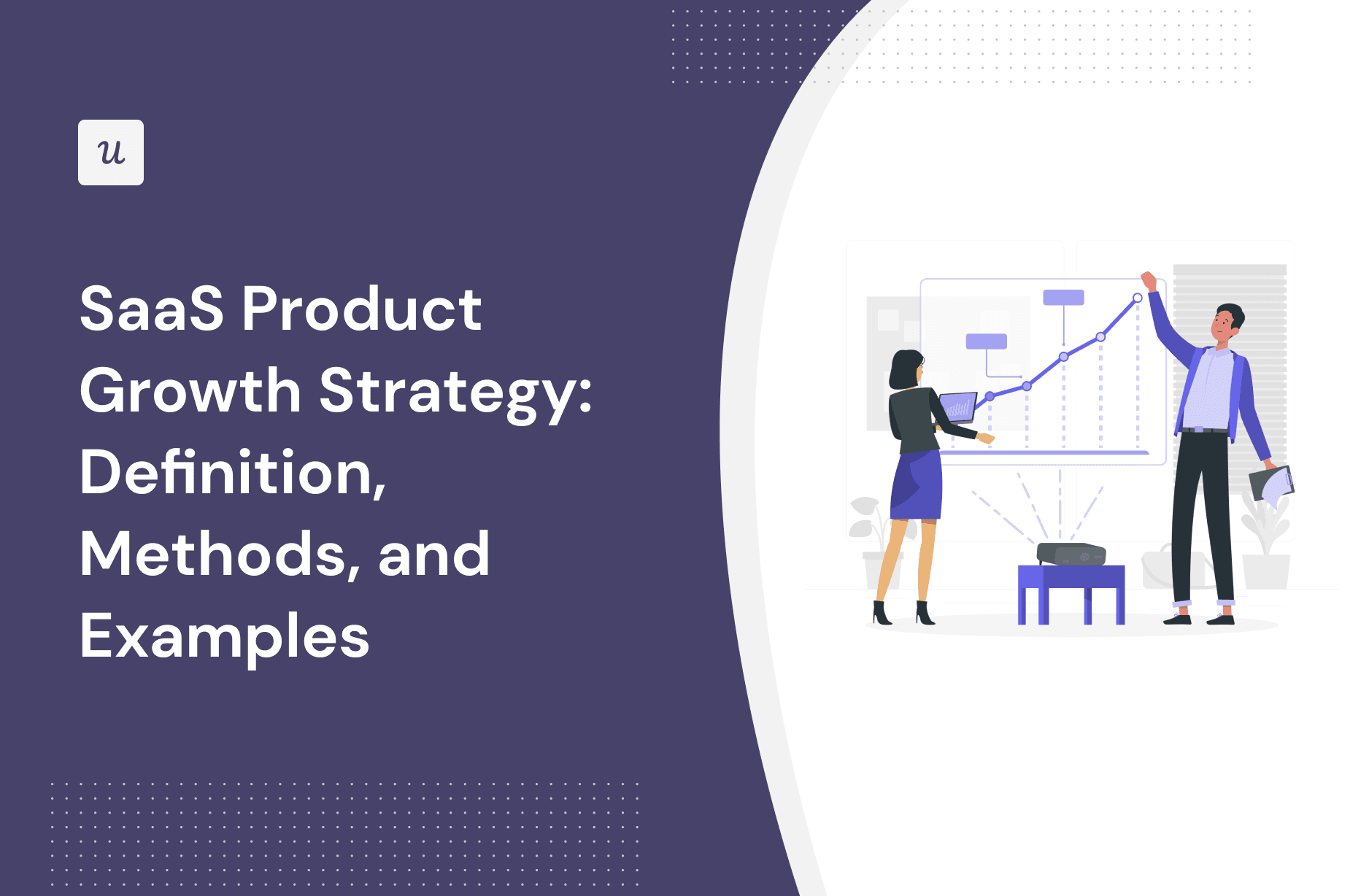
Is a SaaS product growth strategy essential to a modern business’s survival?
Perhaps it’s not essential but it is certainly important. To be sustainable in the long run, you need to evolve and grow. What SaaS product growth strategies can you implement to get there?
That’s exactly what we’ll cover in this article: What is a SaaS product growth strategy and what are the main growth strategy types? We’ll also look over some standout examples of SaaS product growth strategies that hopefully will inspire you.
Try Userpilot Now
See Why 1,000+ Teams Choose Userpilot

Summary of SaaS product growth strategy
- A SaaS product growth strategy is an action plan aiming to increase your market share. A successful strategy will increase your sales, profits, and revenue
- There are four growth strategies in the Ansoff Matrix framework: market penetration, product development, market development, and diversification
- Market penetration- promoting your existing products in your established market
- Product development- creating new products or product features in your established market
- Market development- expanding into new markets with your existing products
- Diversification – creating new products for new markets
- There is a fifth growth strategy option, that only really applies to industry leaders – the acquisition strategy. It involves acquiring your market’s competitor so you not only have one less competitor, but you have the chance to enhance customer experiences.
- A product growth manager is in charge of your product growth strategy: they are concerned with realistic KPI metrics and can achieve these by analyzing customer feedback and data, identifying opportunities for upsells, and testing products and features
- Four standout examples of successful product growth strategies are from SaaS businesses such as Zapier, Dropbox, Slack, and Kommunicate.
- Interested in turning your product into a growth engine? Book a Userpilot demo today to discover how to become product-led!
What is a SaaS product growth strategy?
A SaaS growth strategy is a goal-orientated action plan aiming to increase your market share. It can be long-term or short-term, depending on your business’s needs and resources.
A successful SaaS product growth strategy will increase sales, profits, and revenue. You can achieve it by customizing strategies to your target audience, upgrading your existing products, or creating new ones to fill gaps in the market.
The best SaaS product growth strategies incorporate available resources, industry knowledge, competitor and consumer data, as well as lead generation and revenue opportunities.
It’s also important to remember that great organization, informed decisions, and a solid methodological approach will help you achieve sustainable growth.
What are the four SaaS growth strategies – the Ansoff Matrix?
The Ansoff Matrix is a visual strategic planning tool that provides business professionals with a framework for product growth. Also known as the Product/Market Expansion Grid, it was designed by mathematician and business manager H. Igor Ansoff in the late 1950s.
It outlines the four growth strategies – market penetration, product development, market development, and diversification.
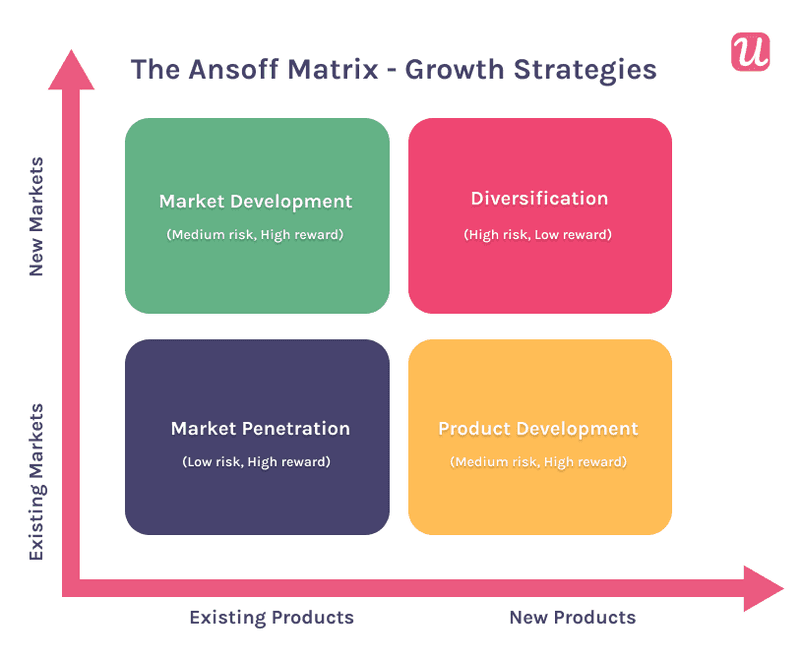
SaaS product growth strategy #1 – Market penetration growth strategy
Market penetration is about growing your market share using your current products and services in the market you have already established yourself through customer acquisition. This is the safest option.
This option usually involves price drops, product refinements, and new product positioning to attract new users and in-product marketing engagement to drive account expansion.
For instance, consider refining the features included in each pricing plan and implementing a usage limit. As users approach this limit, a contextual in-app prompt is triggered, encouraging them to upgrade.
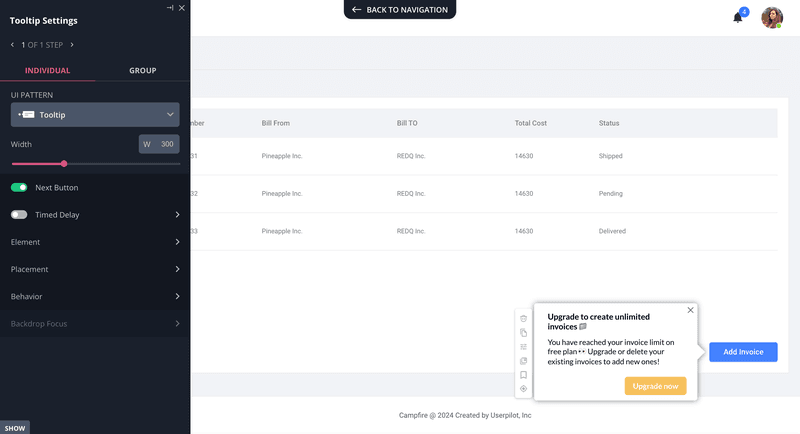
This approach not only drives immediate upsells but also increases the customer lifetime value of your existing users – maximizing the potential within your established market.
SaaS product growth strategy #2 – Product development
While a market penetration strategy involves improving and promoting existing products, a product development strategy creates new ones.
These new products target your existing markets and should add to the existing issue your product fixes or fix a completely new issue.
With research data such as customer feedback, your product development team can add to the success of this strategy by expanding the product in the direction requested by the market or creating add-on products that complement the main product.
For example, you can segment your active users and deploy targeted surveys to gather insights for shaping the features of an upcoming product release. This approach ensures your business remains responsive to user needs and preferences, driving successful product development.
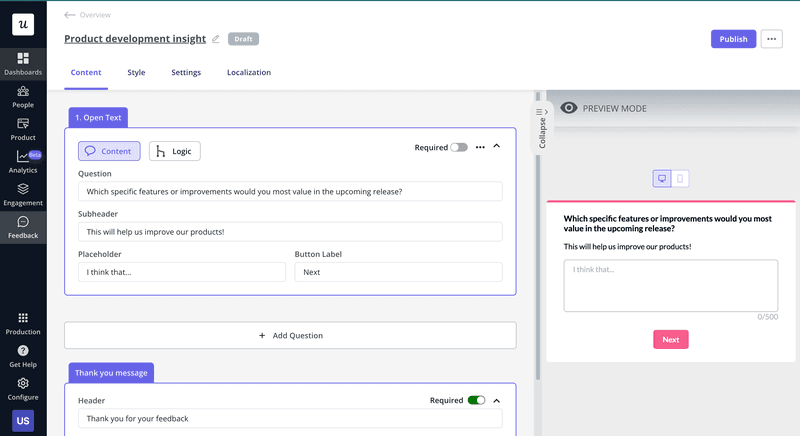
SaaS product growth strategy #3 – Market development
A market development strategy is risky, but it can be highly beneficial if done well. It involves expanding into new markets with your existing products.
A new market can be:
- International and/ or geographic (new customers in new regions or countries)
- A new customer segment (this can be demographic, behavioral, or psychological)
- A new way of purchasing your products (if your business is brick-and-mortar, creating an online shop would create new chances for expansive and cost-effective advertising, as well as new sales to new customers)
This strategy works when you are familiar with your new market since venturing into entirely new markets is exceedingly risky.
It also works well when your team utilizes your audience insight data to identify customer segments and sales trends.
For instance, by tracking and comparing the usage of your main features versus your secondary ones, you may discover that your users are consistently engaging with your secondary features as much as the main ones.
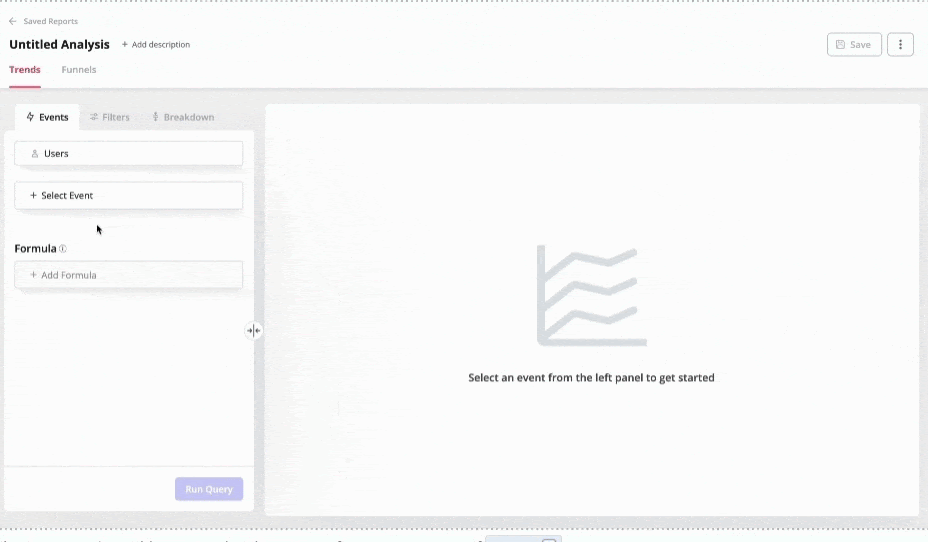
Recognizing the substantial interest in the secondary feature, you can strategically target users who prioritize it. This may involve tailoring marketing efforts or introducing enhancements specifically aimed at this user segment.
SaaS product growth strategy #4 – Diversification growth strategy
A diversification growth strategy is the most challenging and riskiest strategy but it’s arguably the most rewarding if executed properly.
This strategy is all about introducing new products into entirely new markets. And it may be risky because audience research, product development, and marketing development are required for success.
Bonus: SaaS product growth strategy #5 – The acquisition strategy
There is a fifth growth strategy option, that only really applies to industry leaders – the acquisition strategy. The Ansoff Matrix’s strategies are internal, whereas this is external. It involves acquiring your market’s competitor so you not only have one less competitor, but you have the chance to widen customer experiences by obtaining a new product or a product attribute that your customers already want and need.
Think of The Walt Disney Company acquiring 20th Century Fox or Microsoft acquiring GitHub in the SaaS industry. This option is feasible for more established businesses with financial stability and power.
Who is in charge of the SaaS growth strategy?
In SaaS, the Product Growth Manager (PGM) is the person in charge of the product growth strategy.

While a SaaS Product Growth Manager’s role will vary depending on the size and age of your business, as well as the type of product, there are several responsibilities and KPIs that most Product Growth Managers focus on.
There are five key ways a PGM can achieve their goals:
- use A/B testing to optimize the experience across the customer journey and remove friction
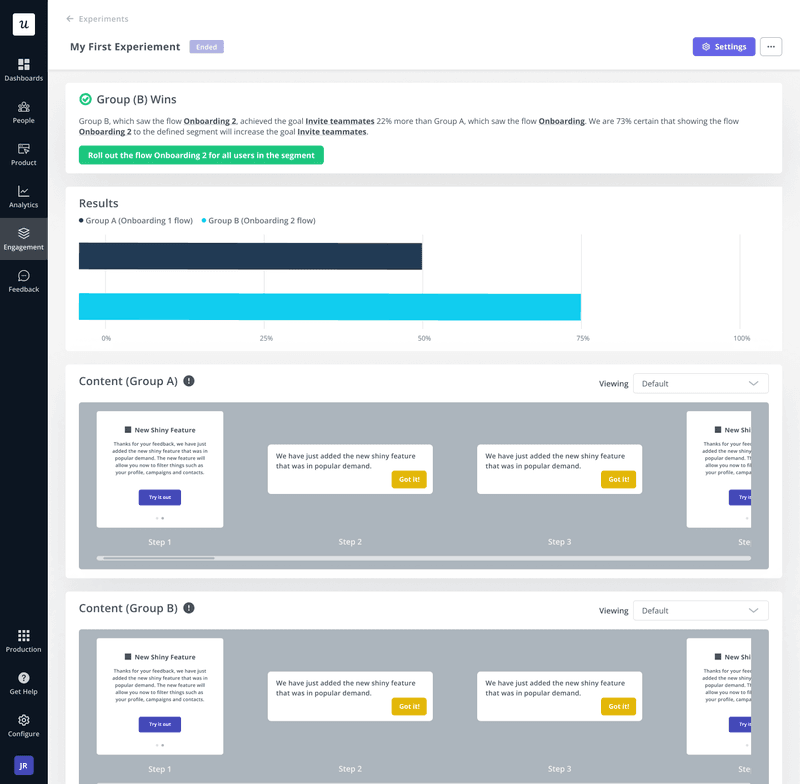
- making the onboarding process smooth so customers can easily access and engage with the product (i.e. using in-app guidance like checklists, tooltips, etc.)
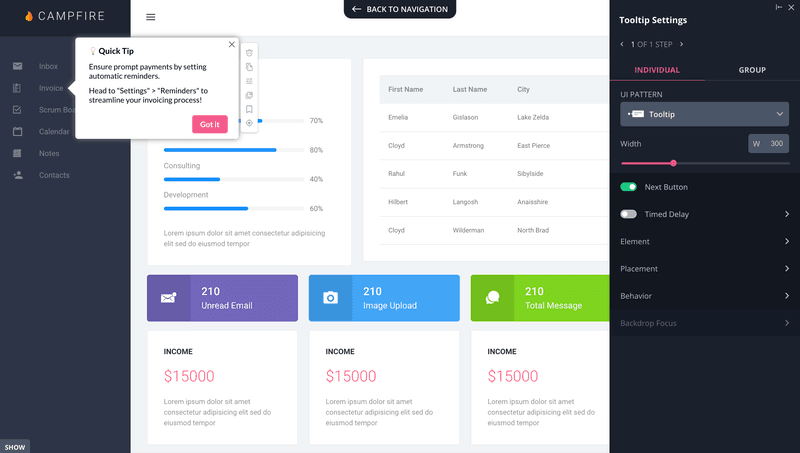
- use customer segmentation to make sure you are addressing customers in a personalized way based on their use case and needs
- focus on improving customer activation-this will result in increased retention and reduced churn
Examples of product growth strategies for SaaS companies
While every SaaS business is unique and will have strengths and resources in different areas, lessons can be learned from the successful SaaS growth strategy of Zapier, Dropbox, Slack, and Kommunicate.
SaaS product growth strategy example #1 – Zapier
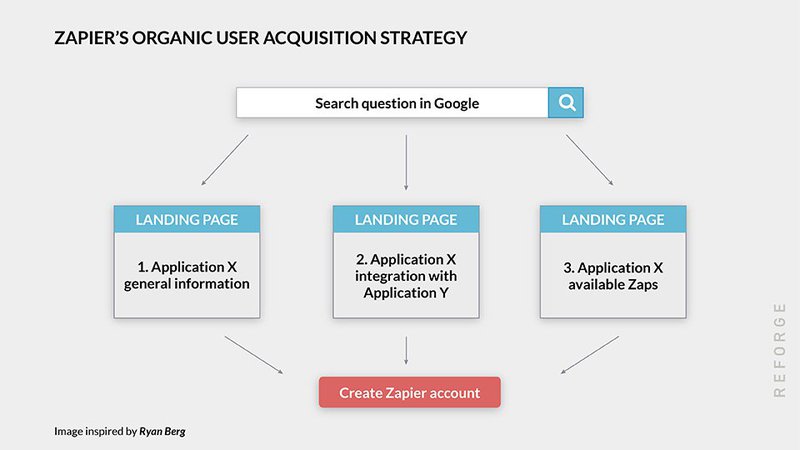
Integration is at the heart of Zapier.
Does a Product Manager need to track their to-do’s in other apps? Zapier. Does a Content Creator want to track their uploads calendar with their analytics app? Zapier.
By researching the user forums of similar apps such as Evernote and Dropbox, Zapier was able to see that users wanted an easy way to integrate all their apps – thus, Zapier was born.
As of today, Zapier has more than 60,000 users. Partnering with the likes of Squarespace and Discord, it has a revenue of $50 million. How did they achieve this? Through a targeted, user-focused marketing development growth strategy.
They constantly appealed to new users by creating targeted SEO blog posts like “How to Automatically Generate Charts and Reports in Google Sheets and Docs”, where Zapier was always the solution. Zapier also created landing pages for every app-to-app combination they could think of, bringing in thousands of new users.
Rather than trying to appeal to everybody, Zapier homed in on specific issues that their app could solve.
SEO is all well and good, but if people aren’t aware of you, you are missing a huge number of potential users. To fix this, Zapier asked their partners to co-content market with them to raise awareness of the business – Zapier’s blog now has almost 250,000 readers and they generate over 7 million visits a month (over 50% of which is from organic searches).
Their marketing development strategy has long-term benefits, as they bring in new partners, they gain new landing pages and integrations, which in turn bring in new users and attract new app partners.
SaaS product growth strategy example #2 – Dropbox
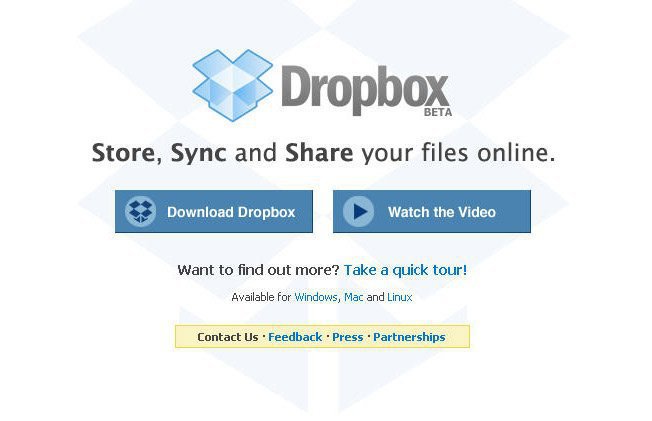
Dropbox, a cloud storage service worth $4 billion has more than 500 million users, 14.6 million of which are paying users. But surprisingly, they spend next to nothing on advertising.
How did they become so successful? They used a product development strategy for their SaaS product growth.
When Dropbox was first launched in 2008, software storage was relatively new, as was the market, and Dropbox had to convince its audience that they were better than physical storage.
They appealed to users by offering 500 MB of additional storage for each user registered with a referral link, as opposed to their competitors who offered a 2 GB limit.
Their bottom-up referral approach may be considered risky as they are essentially relying on their users to promote Dropbox for them, but it got results: Dropbox went from 100,000 registered users in 2008 to 4 million in 2009.
Their product-led growth strategy, achieved by Dropbox’s simplicity, collaborative nature, and self-serve method, naturally led to their ongoing product development strategy, relying on user feedback and frictionless onboarding.
Dropbox also used a growth hack, offering new users who follow/like their platforms an extra 125MB of storage. Customer incentivization is highly beneficial and gets results.
SaaS product growth strategy example #3 – Slack
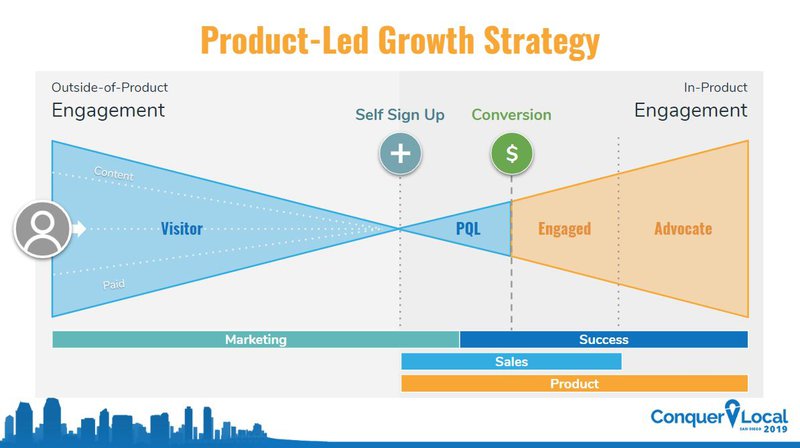
Slack was created in 2013 and currently has over 11 million active users.
The SaaS company began as a way for its creator, Simon Butterfield, to communicate with his team while designing a gaming app. While the game failed, after seeing the value Slack added to him and his team, they decided to market it and grow it through a product development growth strategy.
From its birth, Slack was user-first, so its product development growth strategy was naturally driven by user feedback and data.
They found that if a team reached 2,000 messages, they were more likely to stick around as they had incorporated it into their routine. This being their user activation point, they focused their onboarding experience on driving users to start communicating with their teams and reach the 2000-message milestone.
Once they were more established, Slack adopted the acquisition product growth strategy– they purchased the intellectual property from team collaboration platforms from Atlassian, one of their biggest rivals. By eliminating a competitor (part of their acquisition deal was that Atlassian would discontinue their products to encourage their existing customers to move to Slack) they sent a formidable message to their industry: Slack isn’t going anywhere.
SaaS product growth strategy example #4 – Kommunicate
Kommunicate is a chat-based Customer Support tool suite that helps companies combine chatbots with human customer support to deliver the perfect customer service 24/7.
Their product growth strategy? Product development.
Kommunicate had a problem: 60-70% of their users were using only 3-4 major aspects of the product, while they kept asking for features that were already there. Users were not seeing the product value so Kommunicate had to address this if they wanted to drive customer retention and grow.
To combat this, Kommunicate improved its user onboarding with Userpilot. Parth Shrivastava, Senior Product Marketing Manager at Kommunicate.io, explains that their approach was data-driven:
‘If you don’t have a sales team, everything comes down to the product and product-marketing to scale. So we are a very, very data-driven team – we take decisions based primarily on data’.
Kommunicate set two goals – prompt users to their ‘aha’ moment through the chatbot’s integration button, and encourage users to adopt key features through small but regular cues.
So how did they achieve this?
When users reach their landing page, they are prompted to install Kommunicate, which increased their sign-ups from 40-45% to 55-60% in just seven months:
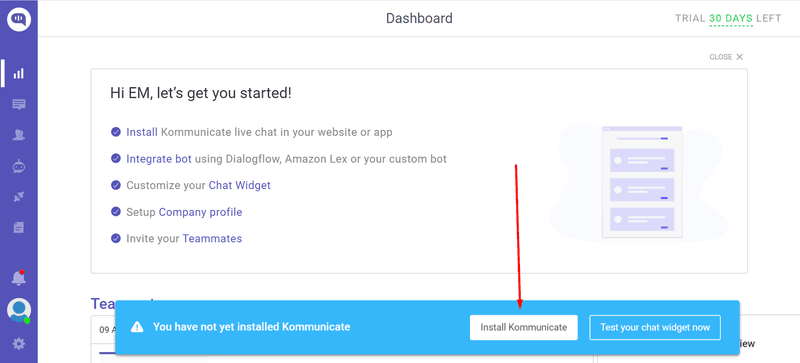
Next, they prompted users with adoption cues.
“We realized there are 5-7 things that all the paying customers do – 5-7 key features they adopt – so all of them we plugged into your product adoption feature.”
This helped Kommunicate grow from only 28% of people reaching them to a whopping 41%.
They also introduced a customizable chat widget to appeal to users as individuals – 86% of Kommunicate users have enabled this feature.
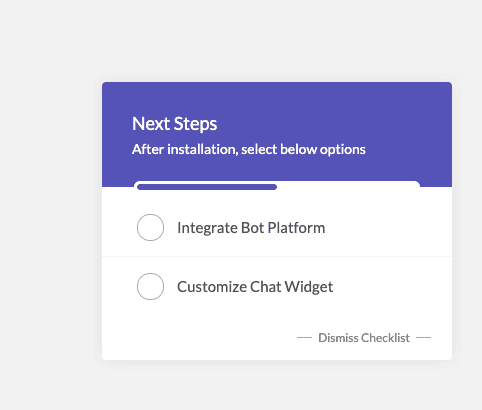
To achieve all this, Kommunicate needed an in-app marketing experiences tool to build checklists and tooltips with no code – all this was possible with the help of Userpilot.
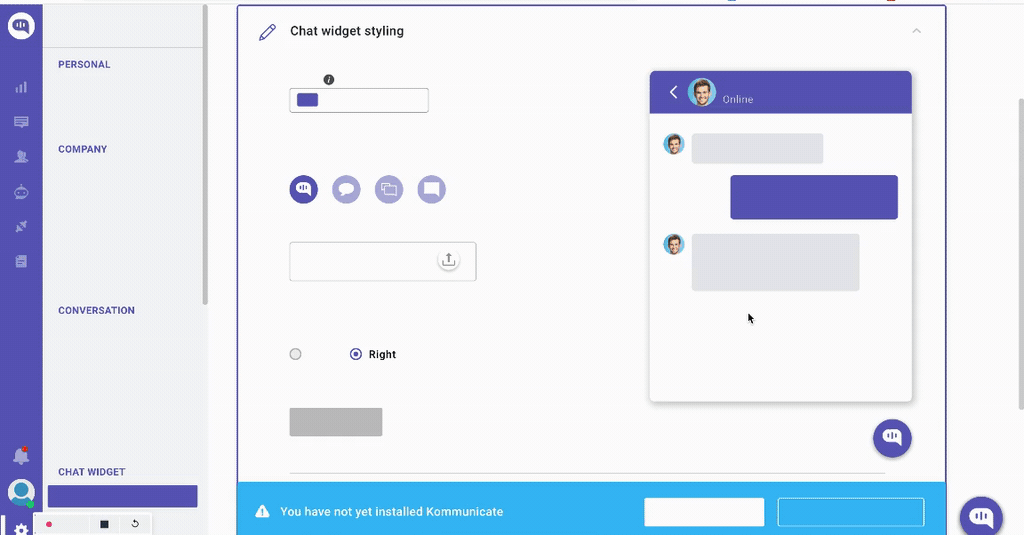
Conclusion
So now you know the four – arguably five – product growth strategies and have seen real, tangible, and achievable results in our standout examples.
Each SaaS product growth strategy comes with its unique benefits and drawbacks, but it is up to you to determine what is right for your business.
The key takeaways are:
- Define your goals and timelines
- Identify revenue opportunities and take advantage of user feedback
- Learn from your competitors
- Decide which strategy is right for you through market research
- Outline clear, actionable steps
Are you looking to increase product adoption with in-app onboarding? Get a Userpilot demo now!
Enhance User Experience and Drive Product Growth with Userpilot

[/vc_column_text][/vc_column][/vc_row][/vc_section]






